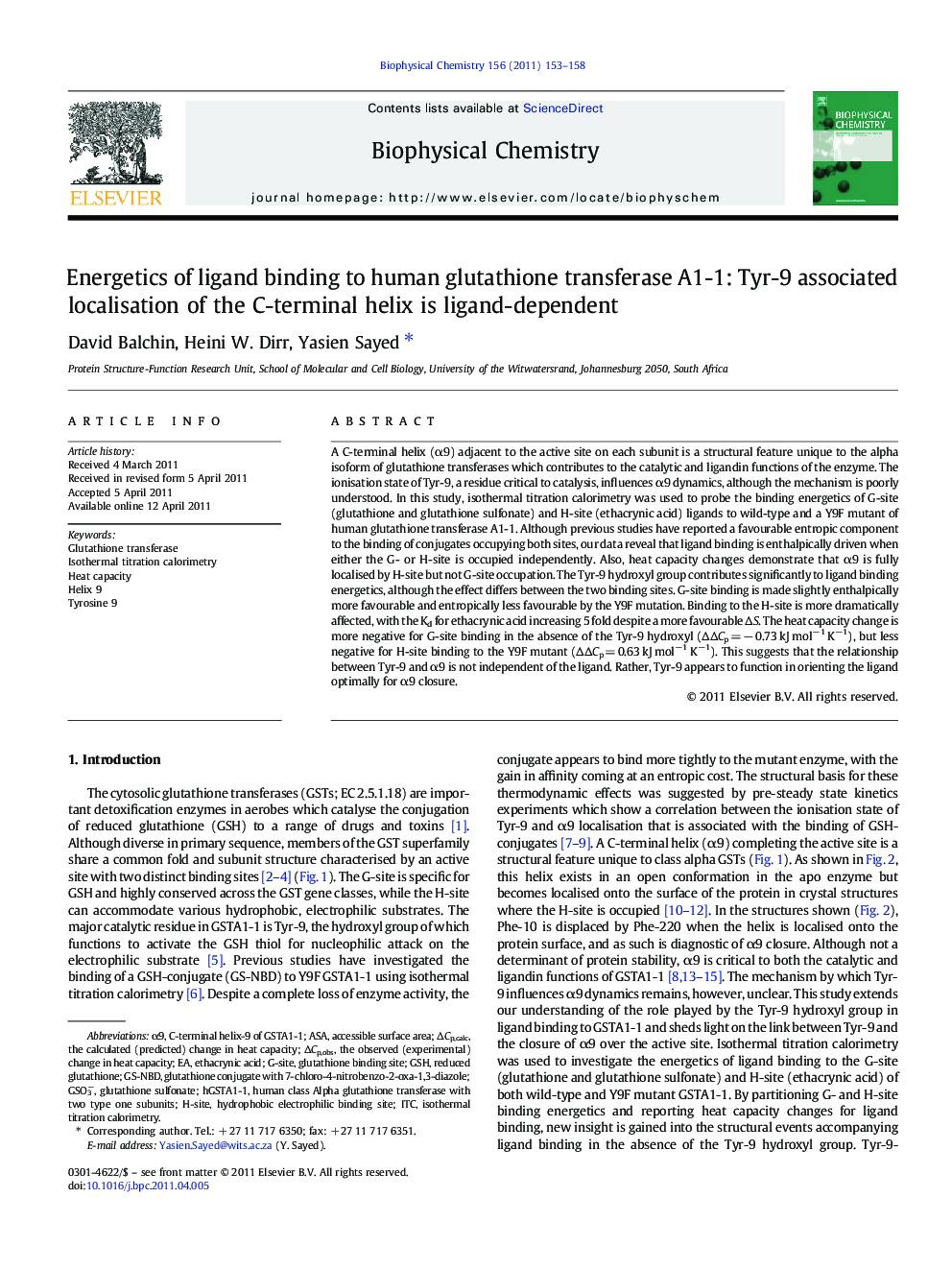| Article ID | Journal | Published Year | Pages | File Type |
|---|---|---|---|---|
| 5371451 | Biophysical Chemistry | 2011 | 6 Pages |
A C-terminal helix (α9) adjacent to the active site on each subunit is a structural feature unique to the alpha isoform of glutathione transferases which contributes to the catalytic and ligandin functions of the enzyme. The ionisation state of Tyr-9, a residue critical to catalysis, influences α9 dynamics, although the mechanism is poorly understood. In this study, isothermal titration calorimetry was used to probe the binding energetics of G-site (glutathione and glutathione sulfonate) and H-site (ethacrynic acid) ligands to wild-type and a Y9F mutant of human glutathione transferase A1-1. Although previous studies have reported a favourable entropic component to the binding of conjugates occupying both sites, our data reveal that ligand binding is enthalpically driven when either the G- or H-site is occupied independently. Also, heat capacity changes demonstrate that α9 is fully localised by H-site but not G-site occupation. The Tyr-9 hydroxyl group contributes significantly to ligand binding energetics, although the effect differs between the two binding sites. G-site binding is made slightly enthalpically more favourable and entropically less favourable by the Y9F mutation. Binding to the H-site is more dramatically affected, with the Kd for ethacrynic acid increasing 5 fold despite a more favourable ÎS. The heat capacity change is more negative for G-site binding in the absence of the Tyr-9 hydroxyl (ÎÎCp = â 0.73 kJ molâ1 Kâ1), but less negative for H-site binding to the Y9F mutant (ÎÎCp = 0.63 kJ molâ1 Kâ1). This suggests that the relationship between Tyr-9 and α9 is not independent of the ligand. Rather, Tyr-9 appears to function in orienting the ligand optimally for α9 closure.
Graphical abstractDownload full-size imageResearch highlightsâºEnergetics of ligand binding at G- and H-site of GSTA1-1 characterised by ITC âºTyr-9 contributes to ligand binding and α9 localisation âºInfluence of Tyr-9 on α9 is ligand dependent
